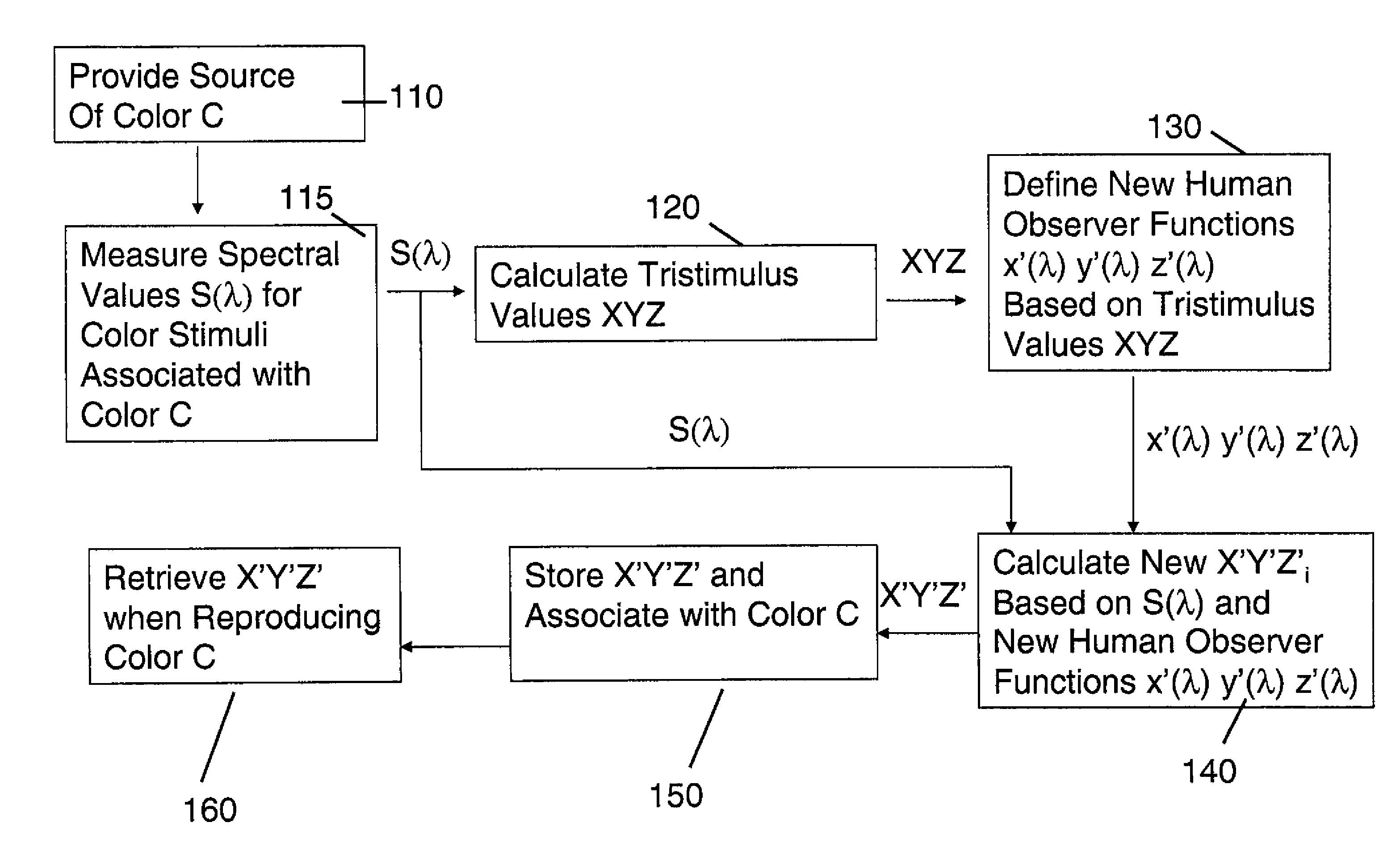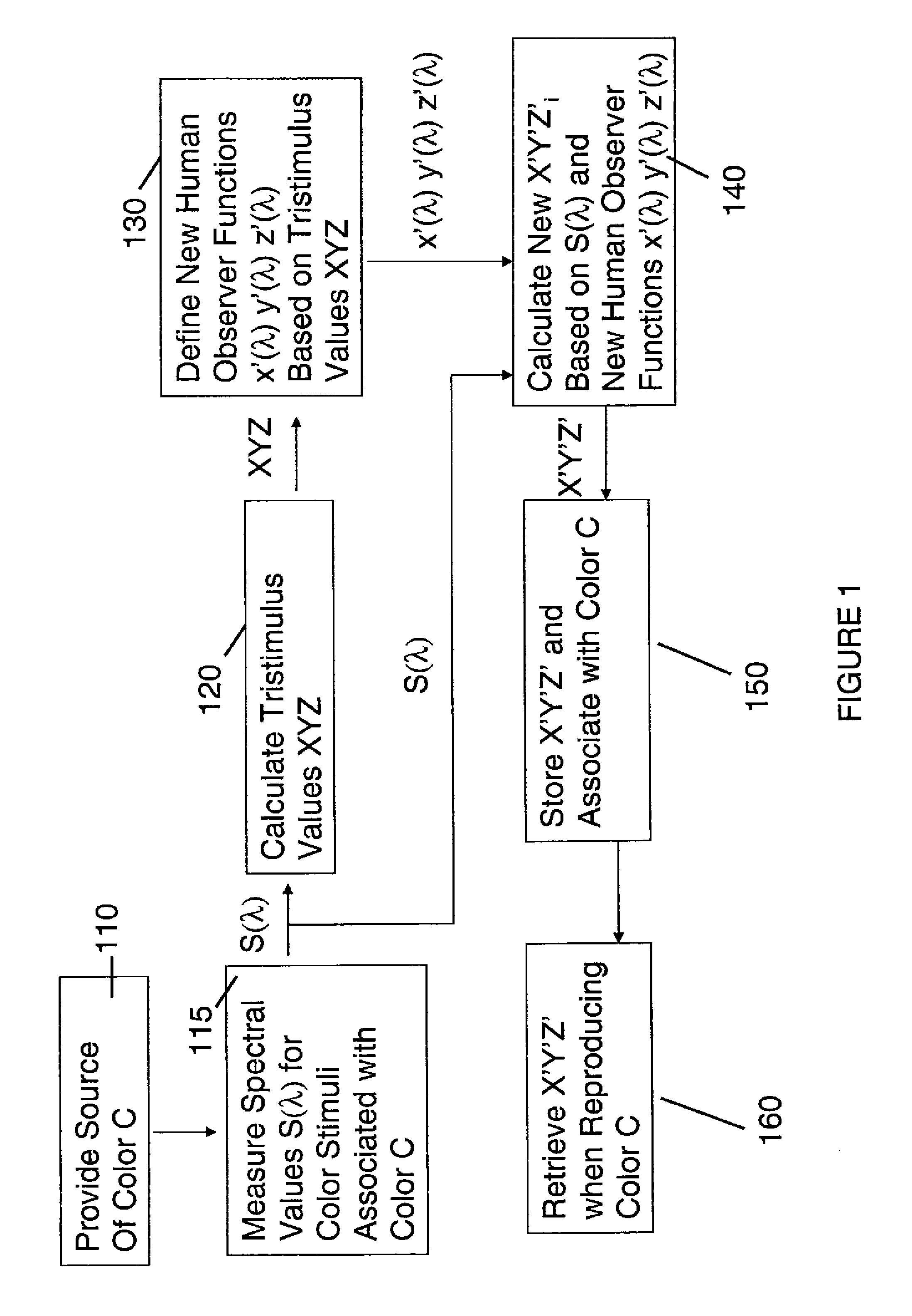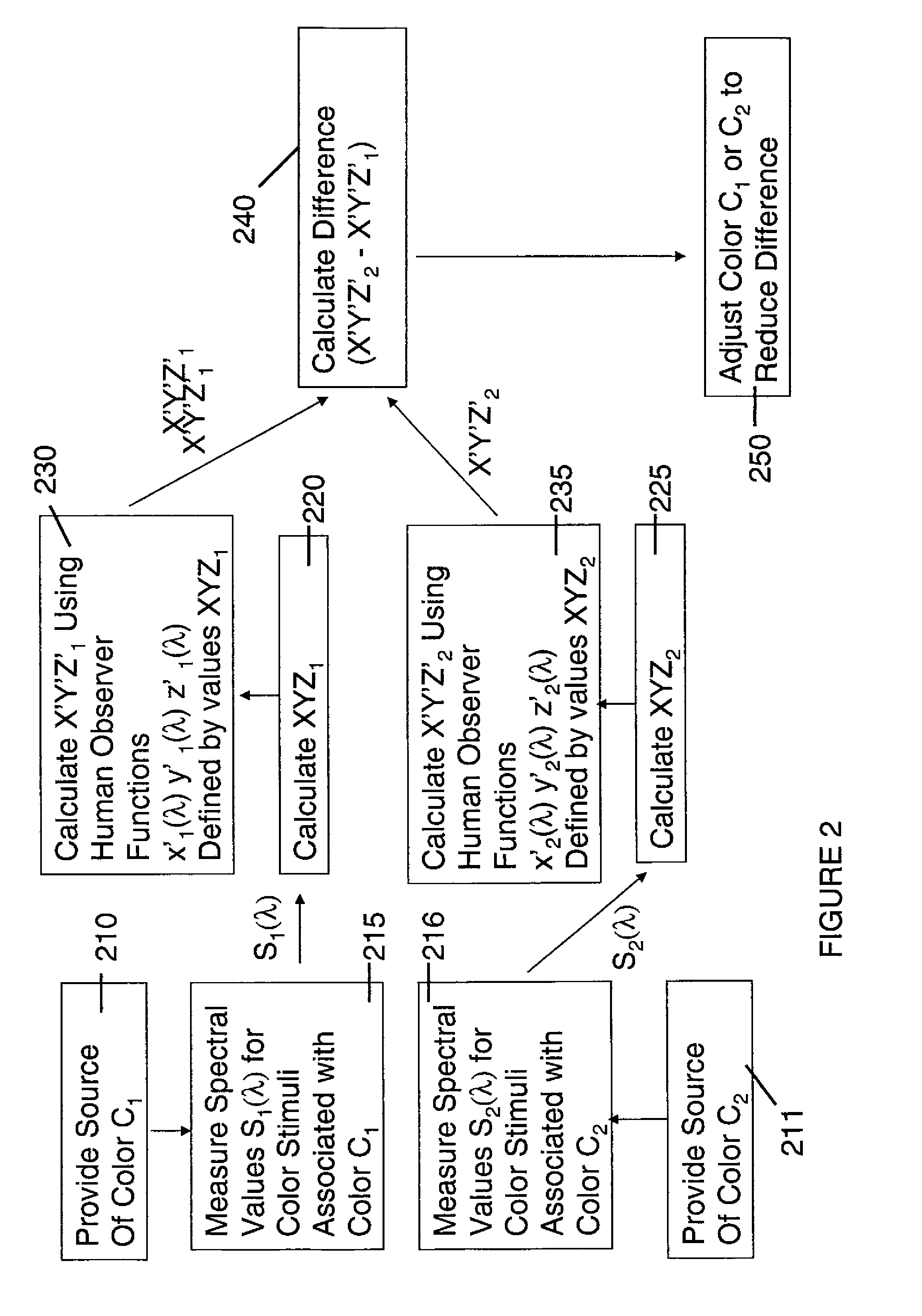Method for matching colors between two systems
a color matching and color technology, applied in the field of color metrology, can solve the problems of difficulty in ensuring the appearance of white/gray balance and accurate appearance of other critical regions of color such as skin tones, and inability to achieve the same level of standardization for soft proofing
- Summary
- Abstract
- Description
- Claims
- Application Information
AI Technical Summary
Benefits of technology
Problems solved by technology
Method used
Image
Examples
example mathematical
Approaches for Calculating NSHOF
[0051]1. Linear Combination of Two Static Sets of x(λ) y(λ) z(λ)
[0052]A first example defines two sets of human observer functions, one determined using the saturation method and one defined using the Maxwell method (indicated by subscripts S and M respectively). A weighted combination of the two functions yields:
xyzC(λ)=α({right arrow over (XYZ)}s) xyzS(λ)+(1.0−α({right arrow over (XYZ)}S)) xyzM(λ) (Eq. 6)
[0053]The weighting factor α(XYZs) indicates magnitude of saturation and should approach 1 for saturated colors and approach 0 for neutral colors. Note that for most of these approaches, two integrations will need to be performed, one for calculating XYZs followed by a second integration to calculate XYZc from the above corrected human observer function. An example of a “reasonable” definition for α(XYZs) is:
α(XYZs)=⌊max(XSXW,YSYW,ZSZW)-min(XSXW,YSYW,ZSZW)⌋max(XSXW,YSYW,ZSZW)(Eq.7)
[0054]where XYZW is the tristimulus XYZ value of the reference whi...
example 1
Method for Characterizing a Color in Terms of Tristimulus Values
[0079]The first example with a color measurement and characterization method indicated is shown in FIG. 1. Step 110 indicates that a source of color C is provided, which is measured and characterized. This color may be a reflective material viewed in an illumination system, a region of color rendered on a display, or a region of color projected with a digital projector. The spectral power distribution S(λ) of the color stimulus is measured at step 115 with a spectral measurement device such as a spectrophotometer controlled by a processing system.
[0080]For emissive devices, an emissive spectrophotometer is used to measure S(λ) directly. In the case of reflective material in a lightbox, it is possible to measure S(λ) directly. However, it is more common for the spectrophotometer to illuminate the reflective material with a know built-in illumination, infer from the measurement the reflectance spectrum R(λ) of the materia...
example 2
Method for Matching Colors
[0084]The next example, describes a method for matching two colors indicated in FIG. 2. A source of color C1 which is measured and characterized at step 210. This color may be a reflective material viewed in an illumination system, a region of color rendered on a display, or a region of color projected with a digital projector. In step 215, the spectral power distribution S1(λ) of the color stimulus is measured with a spectral measurement device such as a spectrophotometer controlled by a processing system as described in Example 1.
[0085]In step 220, the tristimulus values XYZ1 are calculated, for example using current human observer functions x(λ) y(λ) z(λ) determined from the saturation method of color matching. In step 230, the values of XYZ1 are used to define a new set of human observer functions x′(λ) y′(λ) z′(λ), for example using Equation 6 above, which are combined with S1(λ) to generate revised tristimulus values X′Y′Z′1.
[0086]In step 211 the proc...
PUM
 Login to View More
Login to View More Abstract
Description
Claims
Application Information
 Login to View More
Login to View More - R&D
- Intellectual Property
- Life Sciences
- Materials
- Tech Scout
- Unparalleled Data Quality
- Higher Quality Content
- 60% Fewer Hallucinations
Browse by: Latest US Patents, China's latest patents, Technical Efficacy Thesaurus, Application Domain, Technology Topic, Popular Technical Reports.
© 2025 PatSnap. All rights reserved.Legal|Privacy policy|Modern Slavery Act Transparency Statement|Sitemap|About US| Contact US: help@patsnap.com



